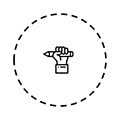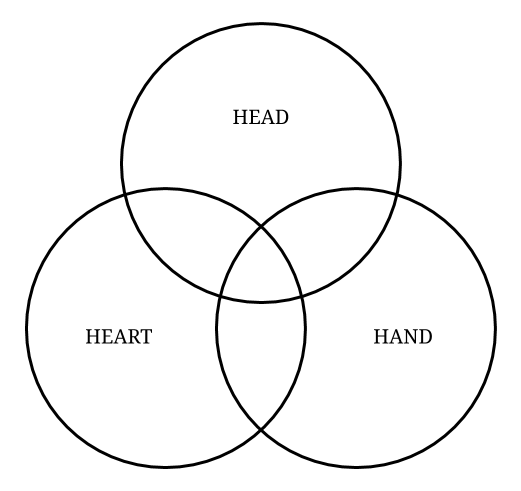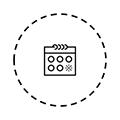This is the 100th article I publish since starting my little writing experiment in the summer. Since then, I have published one new article every weekday. That’s 100 articles in 100 days—well, 130 days if you add the weekends, during which I focused on personal writing and journaling. Many people have asked about my writing routine—which I wrote about when I reached 20 articles—but I wanted to take this opportunity to reflect further.
I started this experiment to get back into writing and to find my voice. I’m not a native speaker, so writing in English has always felt intimidating. I believe there is no better way to learn than to actively practice.
I was inspired by the #100DaysOfWriting challenge, but I slightly modified it to only write on weekdays. I didn’t want to have any pressure to open my laptop during the weekends. And I honestly don’t think I would have been able to keep up if I didn’t have these breaks.
The following is my journey to writing 100 articles in 100 days—or 130, depending on how you look at it—without sacrificing my mental health.
Feel free to skip the numbers if that’s not your thing. I’ll also share the impact writing on a daily basis has had on my professional and personal life, as well as a deeper look at my writing process, and answer some of the questions I received on Twitter. And if you scroll to the bottom, there’s a little gift to celebrate!

A writing experiment in numbers
Since the end of July, I have written exactly 87959 words. If I had been writing a novel instead of articles on this website, I would have a complete first draft by this point.
While the average length of my articles is around 880 words, it’s interesting to see the variance between articles. The longest article was Mindframing: a personal growth framework (2010 words). This was a seminal article for lots of the work I’ve been doing since then, so I wasn’t too surprised when I looked at the numbers. The shortest articles was The generation effect (316 words), which paradoxically is one I keep on referring back to.
I like the wide range of length because my goal is to convey information in both a succinct and comprehensive way. If an idea can be conveyed in 300 words, why write more? As Blaise Pascal once (roughly) said: “If I had more time, I would have written a shorter letter.”
What I find interesting is the fluctuations between the months. The average length of my articles has actually been fairly stable: 920 words per article on average the first month, 872 words the second month, 915 words the third one, 801 the fourth one, and 888 words on average this month.
What happens when you commit to write consistently for a few months? Since I started this experiment, about 130K people have read my articles, with about 250K page views. Not bad for something I started from scratch four months and a half ago. The repartition of traffic follows the classic Pareto rule, with my top articles driving the majority of my traffic.
In case you’re curious, the most popular articles were the following ones:
- Time anxiety: is it too late?
- From FOMO to JOMO: the joy of missing out
- The speed reading fallacy: the case for slow reading
- 30 mental models to add to your thinking toolbox
- Neuromyths: debunking the misconceptions about our brains
What do all of these articles have in common? All but one made it to the front page of Hacker News. And the last one, about neuromyths, is one my most re-shared tweet ever.
But the numbers I keep a close eye on are my subscribers. They are the loyal ones who appreciate my content enough to trust me with their email address. Since July, the Maker Mind newsletter, where I share new articles every week, has grown to 6K subscribers, with a consistent 50-60% open rate.

But enough with the numbers. What I have gained from writing consistently is much deeper, both on a professional and personal level.

Writing beyond numbers
First, writing has been amazing for the business side of things. I can attribute a dozen of consulting contracts and many coaching sessions to people randomly finding me through one of the articles. Companies have contacted me to do workshops and to license the content, which I’m currently exploring.
In terms of exposure, I have been invited to several podcasts and some articles were featured in the international press, such as LifeHacker. While these haven’t been a huge source of traffic, they have allowed me to reach new audiences I wouldn’t have access to otherwise. That’s why I always say yes to interviews, whether written, audio, or video.
On a personal level, what I’m most excited about is all the new friends I made through my writing. I have discovered several like-minded entrepreneurs who share the same interests—sometimes with different values and beliefs—and the conversations have been incredibly stimulating. I’m grateful to have a platform which allows me to build a network of smart people around the world.

Writing is a great way to get to know yourself better. By writing on a daily basis, I start recognising patterns. Sometimes, it takes a lot of effort to finish writing an article, whereas other times I can sit for three hours straight, deep in research mode, focused and excited about what I’m learning and writing about. Once you have written enough articles, you start getting a sense of what makes you tick. People can feel it when you poured your heart into something, and I think my most popular articles also reflect this.
Finally, writing has had a positive impact on my mental health as an entrepreneur. Having these two hours blocked every morning to create, reflect, explore, learn—to cultivate my curiosity—feels akin to going for a long run. It may be hard to start sometimes, but when you’re done you feel a kind of exhilaration which is difficult to reproduce through other means.

Writing consistently over a long period of time
Before writing this article, I asked people what topics they would like me to cover. By far, the most common questions where around motivation, building a writing habit, and my writing process.
- Research process. Most of my articles are backed by scientific research. Sometimes I read an interesting paper and I decide to write about it. But most of the time, my ideas start with conversations I have with people. I hear someone mention a theory, a fact they noticed in their day-to-day life, and I wonder: “Is there any science behind this?” I then start looking up papers on Google Scholar and learning as much as I can about the topic. What I discover becomes the basis for an article.
- Topic ideas. As I mentioned, most of my ideas come during conversations. I often interrupt people to ask if it’s okay to take a few notes. But I also have ideas while reading books and blog posts, browsing Twitter, listening to podcasts, or watching videos. I try to engage actively with the content by taking notes, and this process often sparks new ideas. I don’t bother to figure out which ideas are worth chasing, worry about having a unique take, or try to optimise for SEO—I go with what I feel most inspired about.
- Time management. I block time every morning from 8 to 10am to write. Sometimes it takes longer, sometimes I finish before. I actually am more efficient when I have a meeting at 10am—having a deadline gives me a sense of urgency and helps me get in the flow.
- Motivation. Sometimes it’s hard to feel motivated. I may be tired, stressed, or just not feeling inspired. I apply the principles I shared in some my articles, such as running a motivation clinic and applying the DUST model of motivation. Understanding why you don’t feel motivated is half the battle against procrastination.
- Hitting publish. People have asked how I know when something is good enough. The answer is: I don’t. Instead of stressing over how I can make a piece better, I write it, re-read it once, correct it or improve it where needed, then publish. Half of the fun is getting feedback on what I write. Sometimes, I go back to a piece to incorporate suggestions from readers. But I find it more important to get a first version into the world. It’s a way to start a conversation. When you’re just getting started, it can be pretty daunting to put content into the world. But after a while, it almost feels like a ritual.
This is basically how I managed to write 100 articles in 100 days. If you want to learn more about my writing process, you may enjoy these:
- How to build a better writing habit
- Writing is the best personal growth tool
- The science-based benefits of writing
I also gave a short talk at Backed VC a couple of months ago. It’s 7-minute long and explains why we can all be writers, what to write about, my own writing process, and more.
Building a newsletter
Another milestone I hit this week is 6K subscribers to the Maker Mind newsletter. Here are a few things I learned while building a newsletter.
- Consistency beats strategy. Picasso created more than 50,000 works of art, but only about a hundred are considered masterpieces. Following the Pareto rule, most of my traffic comes from a small subset of articles. To this day, I still have no idea if an article will perform well. It’s a bit like fishing. By writing every day, I maximise the chances something will hit a chord.
- You don’t know what you don’t know. Instead of spending lots of time researching the best ways to grow a newsletter, I just decided to get writing. I only did research when I was confused about something or felt like something could be optimised, on a “need to learn” basis.
- Communities are powerful. I can attribute most of my success to sharing my articles on Hacker News, Twitter, and Indie Hackers. By contributing to these communities, I create a virtuous circle where I get feedback, improve my content, and attract more people with relevant interests.
- Newsletters are making a comeback. Since I started my newsletter, I’ve discovered a whole world of indie writers, publishers, and content creators. I think there’s a whole audience to serve there, driven by the passion economy, and indie hackers would do well to explore it.
- It’s okay to not have a plan. I didn’t have one when I started this experiment. I just knew what I cared about and who I wanted to help. Now, I have a much clearer idea of where I want to go. But it only happened because I put the work in first to connect with the right audience.
I have been asked about my plans for the future and about my business model. Currently, Ness Labs is monetised through partnerships with startups and brands in the mental well-being and entrepreneurship space, as well as coaching sessions, consultancy work, the shop, and the new mindful productivity library, where readers can purchase curated collections of thematic articles.
In the future, I want Ness Labs to become a modern academy, teaching people essential skills that should be taught in school, but currently aren’t—such as emotional resiliency, critical thinking, how to manage conflict, learning how to learn, creativity, empathy, etc.
If you’d like to follow my journey, sign up to the newsletter. To celebrate this milestone, I will gift a one-year Audible subscription to a randomly selected subscriber, as well as one audiobook of their choice. Everyone who’s subscribed by the time I send today’s newsletter at 4pm GMT / 8am PST will be eligible. Thanks for reading!
